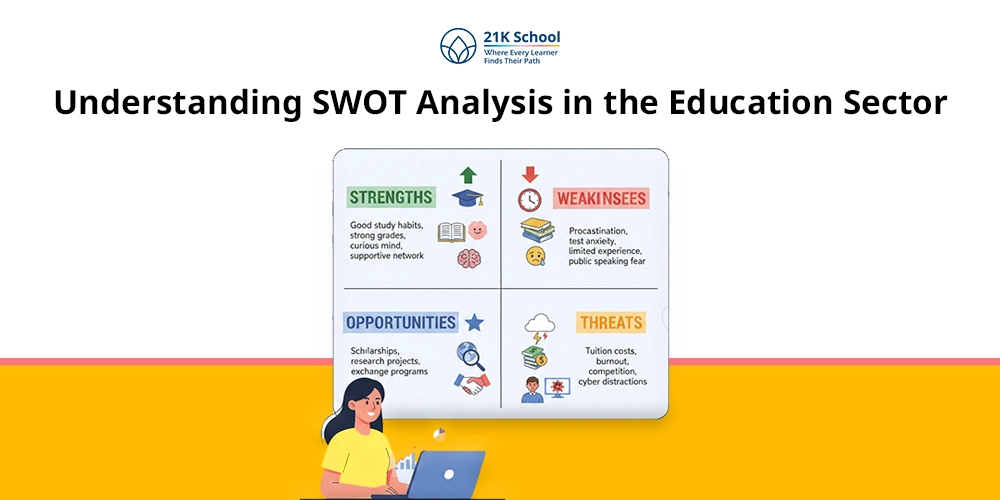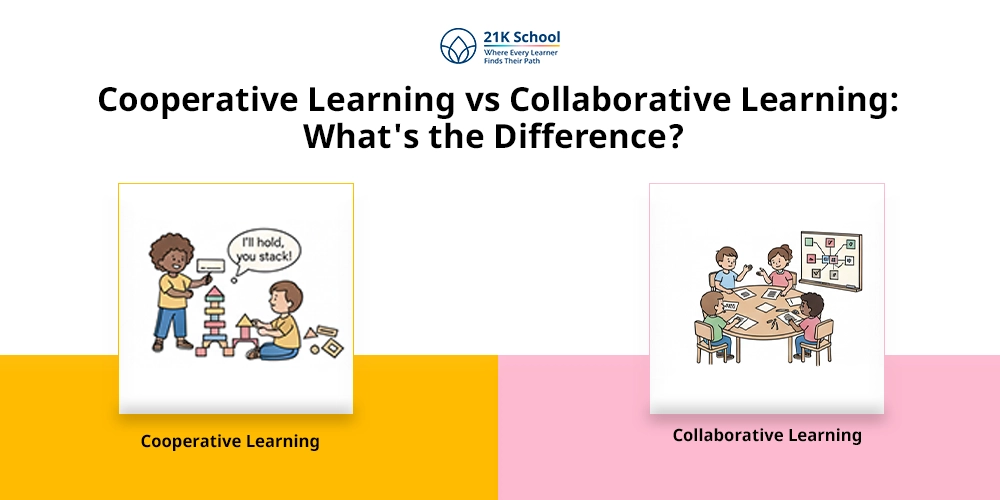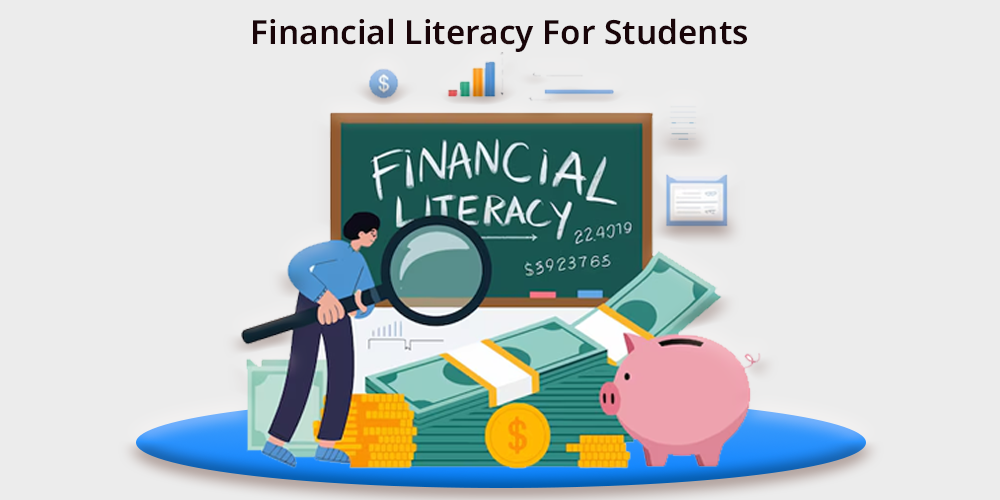
In today’s modern world, it is very essential for everyone to have proper financial literacy.
Financial literacy is essential for gaining knowledge of finance and money-related aspects. Financial Growth and development can be achieved through dedication and determination towards a particular thing.
It is also very important for kids to have proper financial literacy at an early age. Financial literacy also helps in getting proper life knowledge.
The journey of life can be understood by implementing financial decisions, this will help in achieving future goals.
Financial literacy isn’t only related to business; it also plays a crucial role in education and daily life. Financial literacy also helps in achieving short-term and long-term goals.
This allows us to do small activities that help in developing a positive learning environment .
Contents
- 1 What is Financial Literacy?
- 2 Importance of Financial Literacy Among Students
- 3 Principles of Financial Literacy
- 4 Top 5 Ways to Teach Financial Literacy to Children
- 5 Strategies to Improve Financial Literacy Skills
- 6 Financial Literacy Activities
- 7 Benefits of Financial Literacy
- 8 How to Become Financially Literate?
- 9 Conclusion
What is Financial Literacy?

Financial literacy can be defined as the ability of an individual to have knowledge about financial terms such as saving, debt, credit, borrowing, investment, assets, liabilities, and so on. Financial Literacy is very important to achieve lifelong goals.
An individual’s likelihood of experiencing personal financial distress is reduced when they are financially literate because they are better equipped to handle certain financial obstacles.
Since student loans, mortgages, credit cards, investments, and health insurance are all part of daily life in today’s society, gaining financial literacy is essential. People who don’t have financial literacy are termed as financially illiterate.
Importance of Financial Literacy Among Students
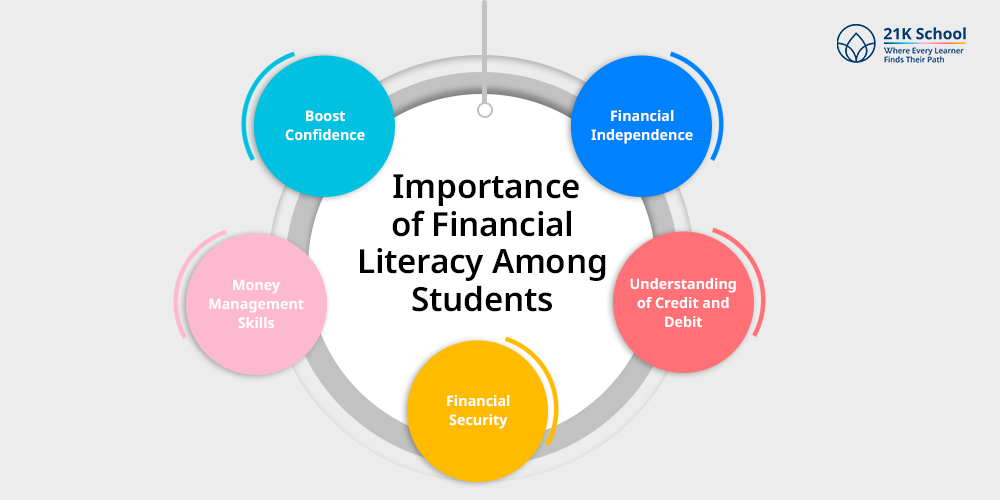
Financial Literacy is very much essential for students; through this, they can escape financial traps.
Financial education makes students more active and prepares them for future opportunities. Below, you can check the importance of financial education for students.
1. Financial Independence:
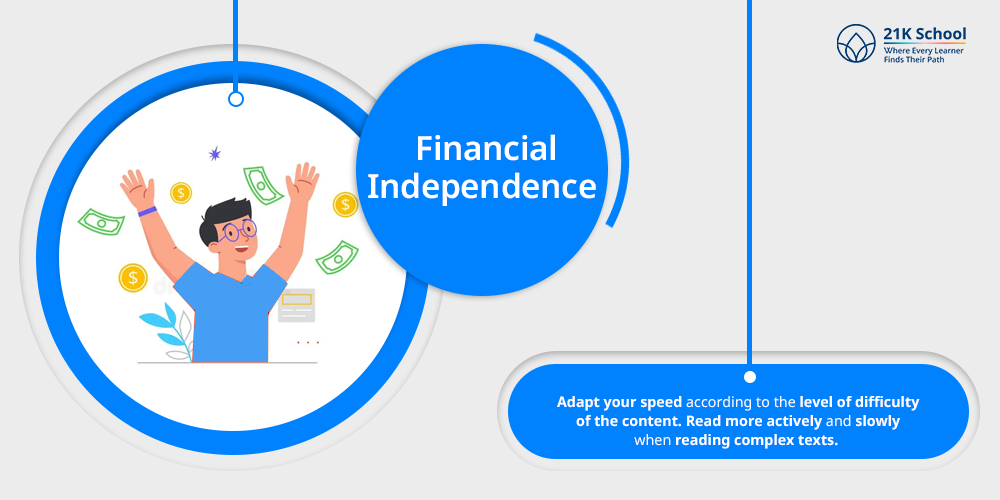
Budgeting, saving, and investing are all skills that financial literacy teaches students, preparing them for financial independence.
They are better able to make financial decisions and stay out of debt as a result.
2. Understanding of Credit and Debit:
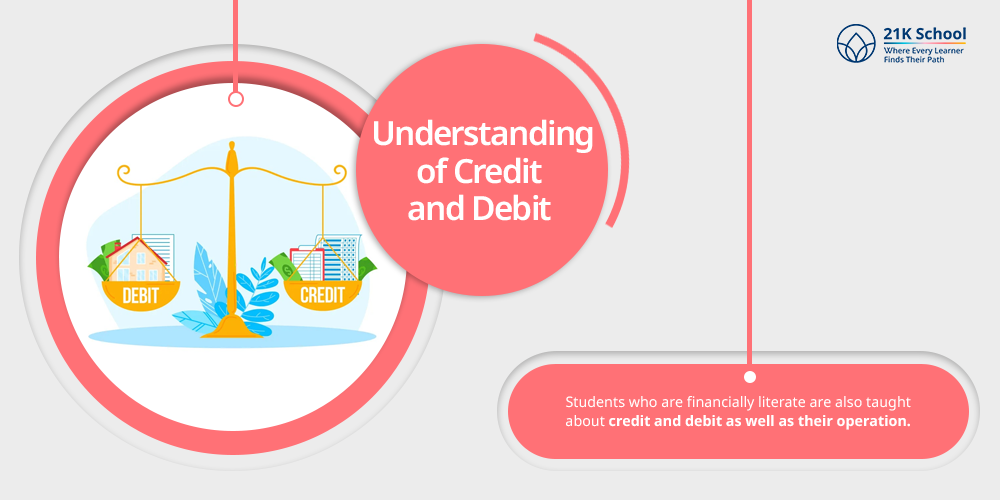
Students who are financially literate are also taught about credit and debit as well as their operation.
For upcoming loans, credit cards and mortgages, they learn how to establish and preserve a high credit score.
3. Financial Security:
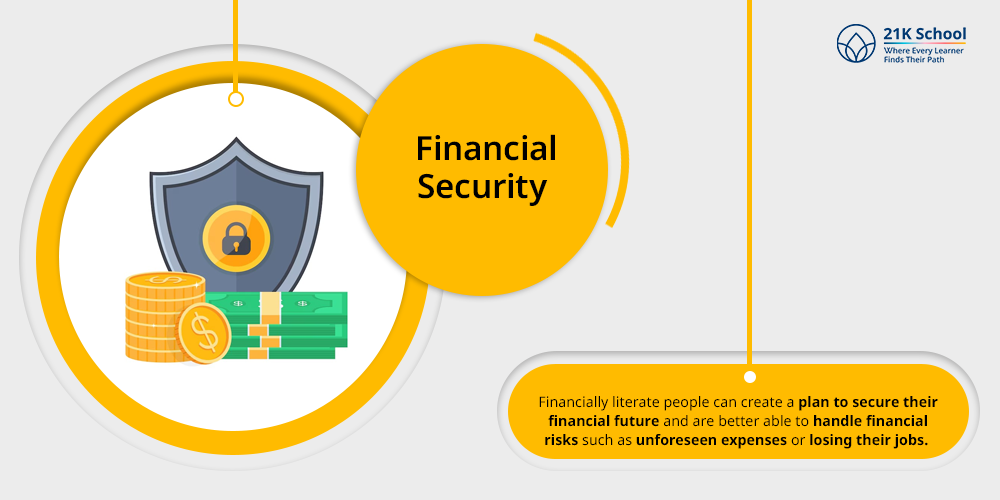
Financially literate people can create a plan to secure their financial future and are better able to handle financial risks such as unforeseen expenses or losing their jobs.
4. Money Management Skills:
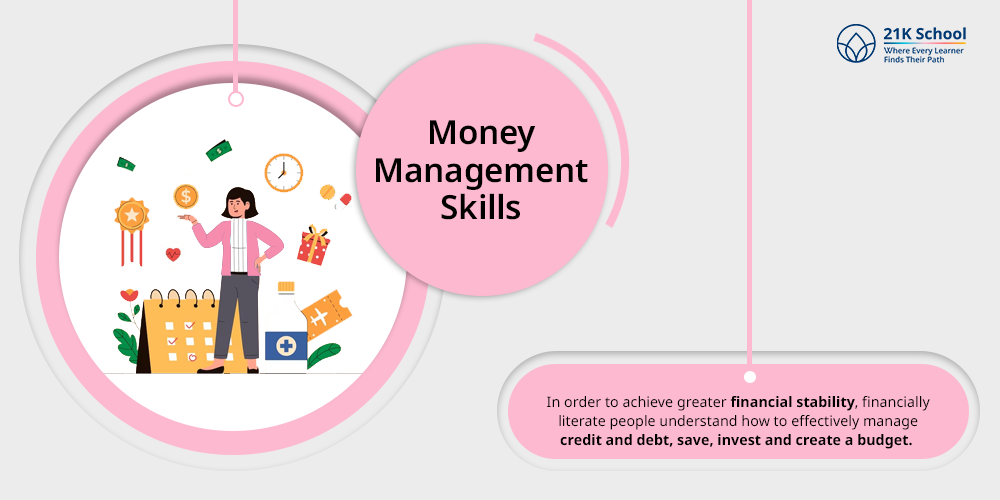
In order to achieve greater financial stability, financially literate people understand how to effectively manage credit and debt, save, invest and create a budget.
5. Boost Confidence:
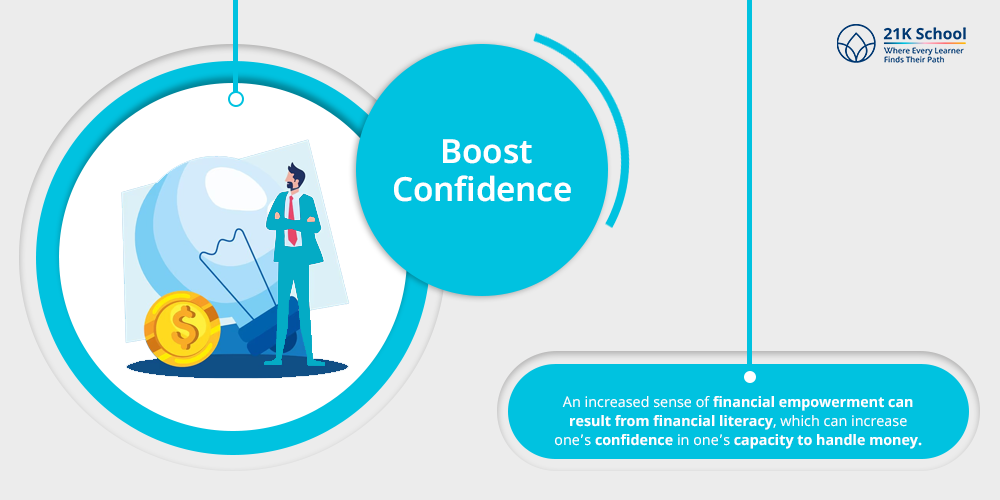
An increased sense of financial empowerment can result from financial literacy, which can increase one’s confidence in one’s capacity to handle money.
All things considered, having a solid understanding of finance is a great life skill that can help you become more successful and secure financially.
Principles of Financial Literacy
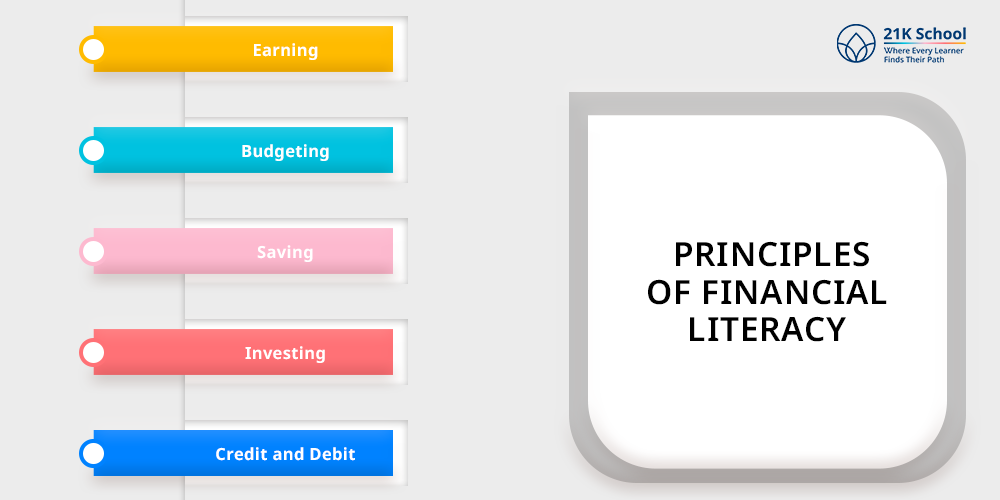
Financial Literacy works on a few principles that are essential for higher achievements. The principles of financial literacy are essential in managing money.
Knowledge of these principles is essential for setting up balanced money and debt control.
The essential principles are earning, budgeting, saving, investing, credit and debit. Here are the top 5 principles of Financial Literacy.
1. Earning:

Earning is the most essential part of financial literacy. To manage your money, it is essential to start earning.
Money Management Skills will help to understand earning principles and increase future growth.
Earning financial literacy is about learning new skills, going to school and finding a job that will allow you to make the money you need both now and in the future.
2. Budgeting:
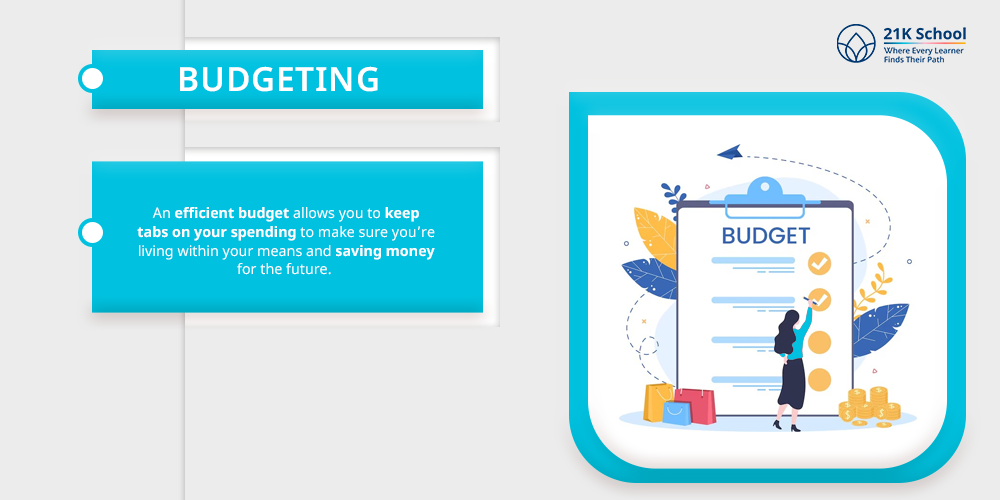
Budgeting is one of the effective ways of money management. One of the effective principles of financial literacy is budgeting.
An efficient budget allows you to keep tabs on your spending to make sure you’re living within your means and saving money for the future.
3. Saving:
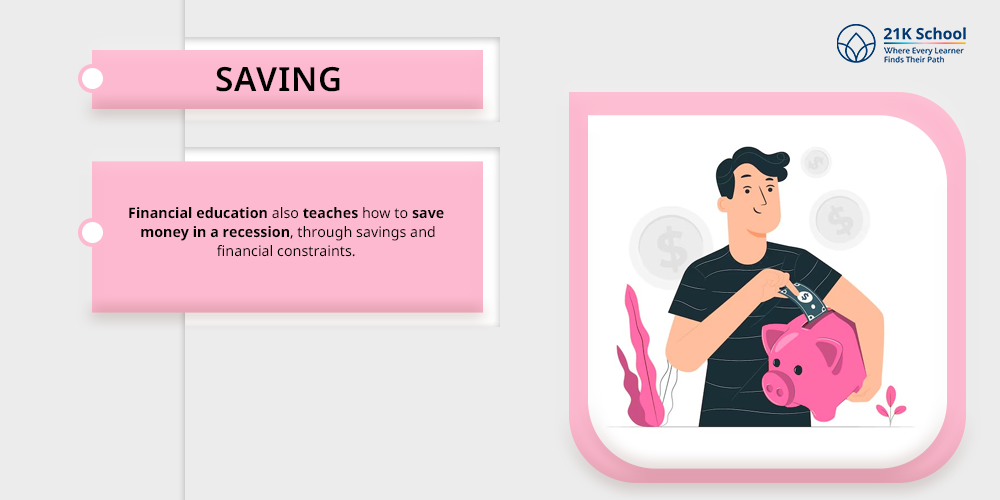
Saving is the most effective way of generating future income. Financial education also teaches how to save money in a recession , through savings and financial constraints.
Today’s savings are tomorrow’s income, so saving will lead to future development through various activities.
4. Investing:
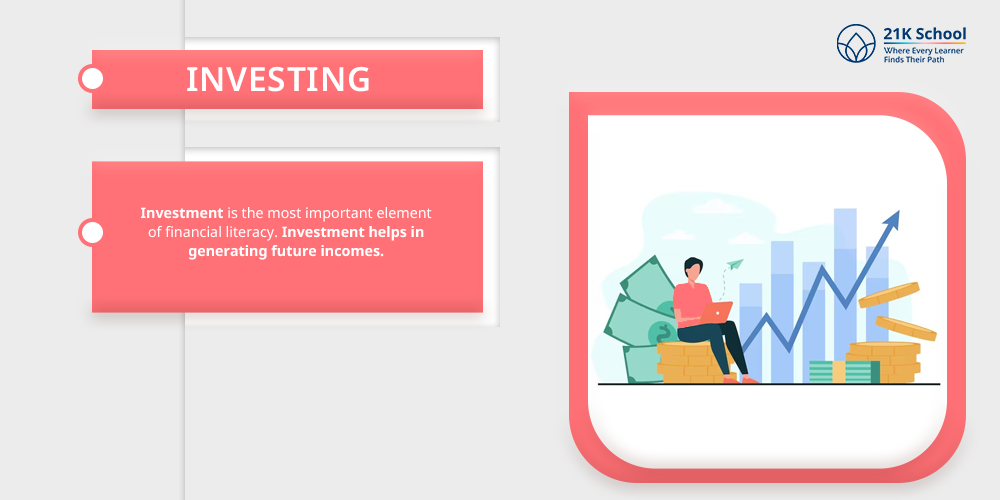
Investment is the most important element of financial literacy. Investment helps in generating future incomes.
Investment can be both long term as well as short term, this allows students and individuals to make their decisions. A better decision will help in improving future income outcomes.
5. Credit and Debit:
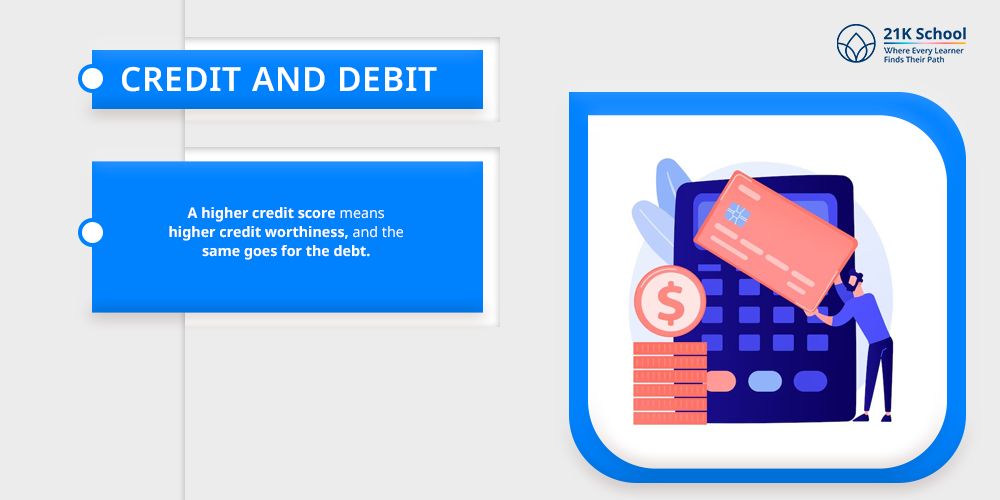
Debt and Credit management are both essential for money management. Credit and Debit are the important elements of financial education.
A higher credit score means higher creditworthiness, and the same goes for the debt.
Top 5 Ways to Teach Financial Literacy to Children
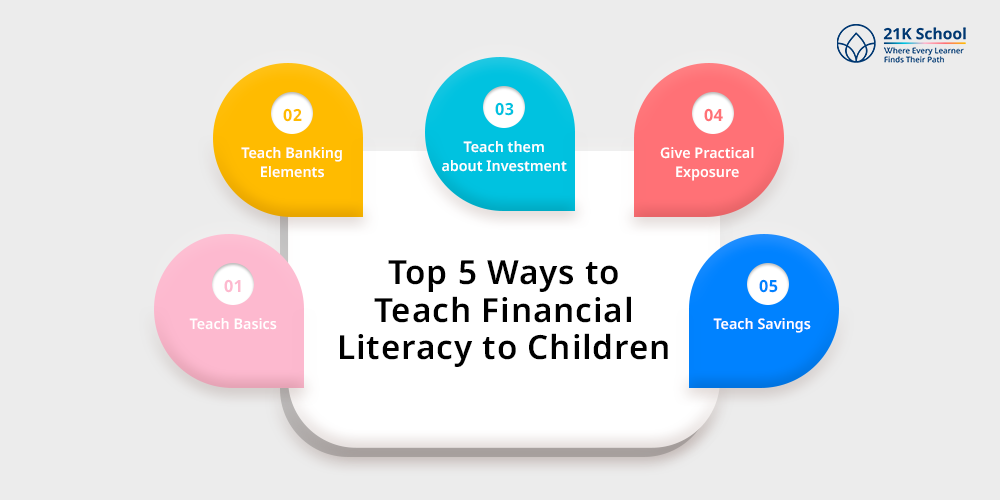
Knowledge of financial literacy among students is essential in promoting better outcomes. It is essential to teach children’s about financial decisions and education.
This allows kids to have a better understanding of money concepts and helps in achieving lifelong goals.
Below, you can check the top 5 ways that helps to teach children’s financial literacy.
1. Teach Basics:
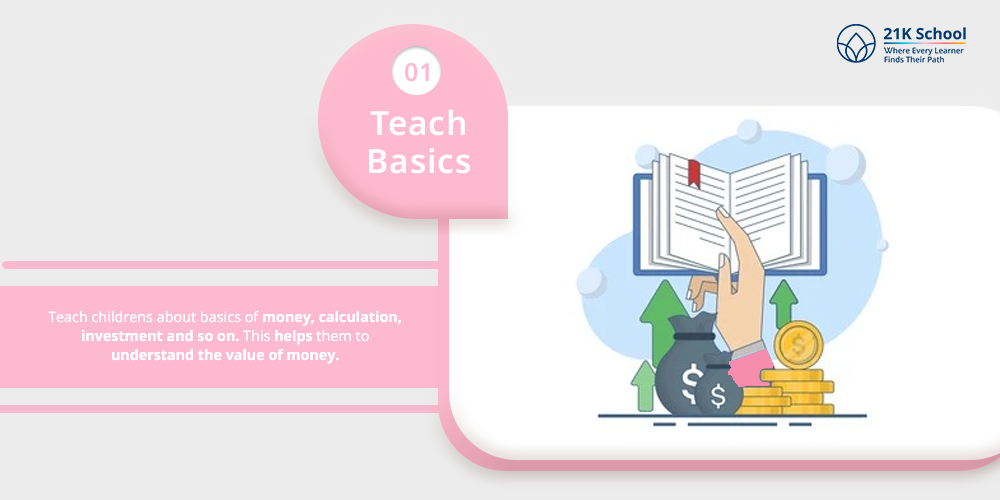
Starting with the fundamentals is one of the best strategies to encourage financial literacy in children.
Teach childrens about basics of money, calculation, investment and so on. This helps them to understand the value of money.
2. Teach Banking Elements:
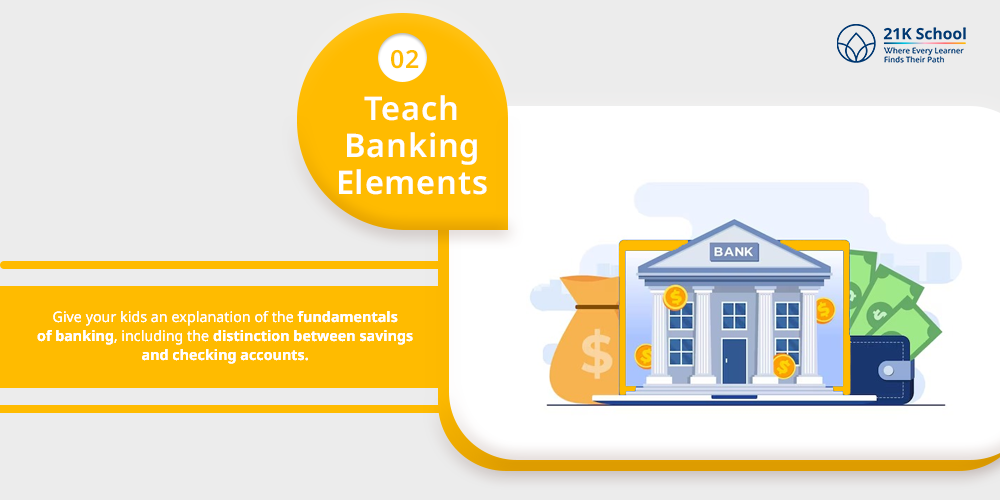
Give your kids an explanation of the fundamentals of banking, including the distinction between savings and checking accounts.
Allow them to experience making a deposit and getting a bank statement by taking them to the bank. This provides them with real-life exposure.
3. Teach them about Investment:
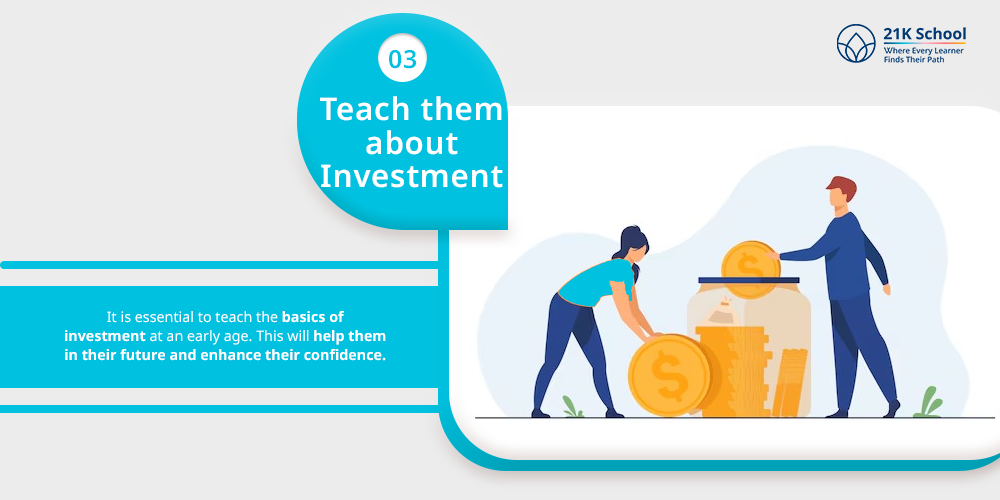
It is essential to teach the basics of investment at an early age. This will help them in their future and enhance their confidence.
Describe the long-term growth potential of investing their money. However, young children may find the complexities of investing too complex, so it is better if you use simple terms.
4. Give Practical Exposure:
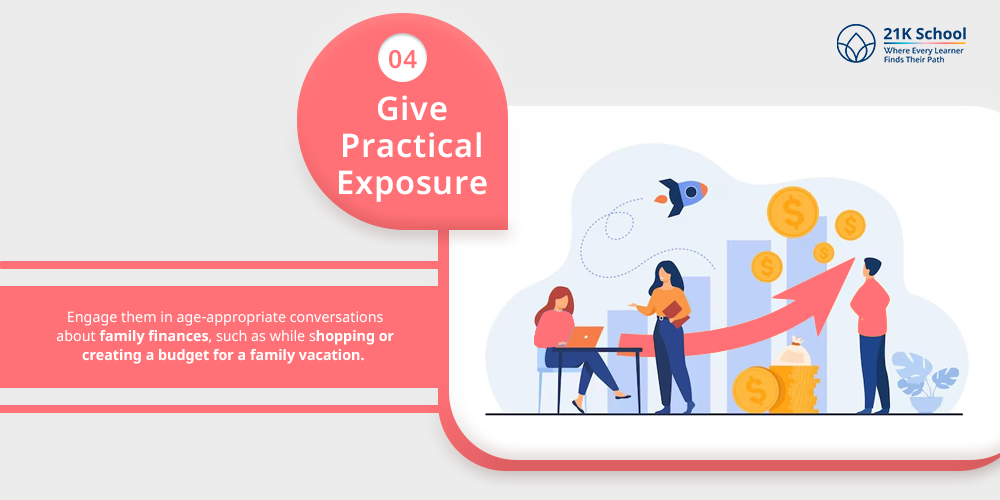
One of the effective ways to teach financial learning is to give them practical exposure.
Engage them in age-appropriate conversations about family finances, such as while shopping or creating a budget for a family vacation. Children learn the value of money through real-world examples.
5. Teach Savings:
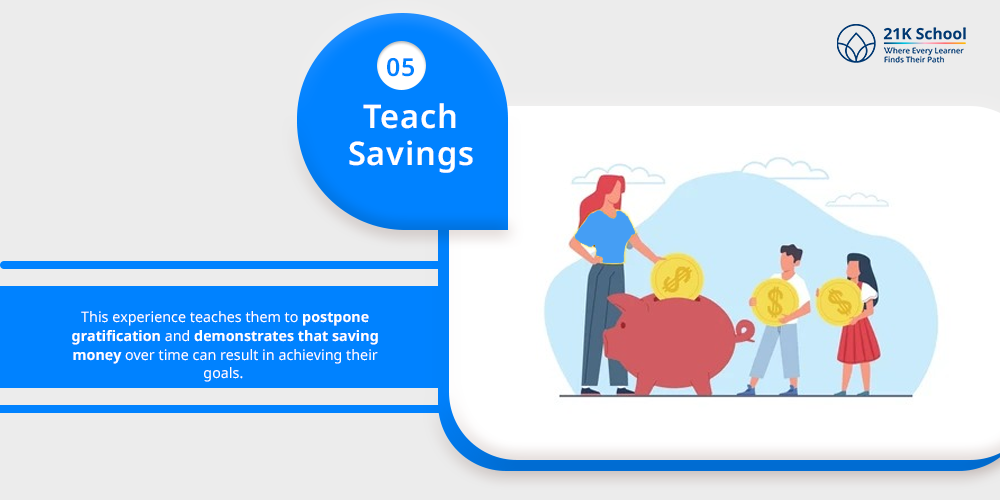
Teach children about savings at an early age. This experience teaches them to postpone gratification and demonstrates that saving money over time can result in achieving their goals.
Strategies to Improve Financial Literacy Skills
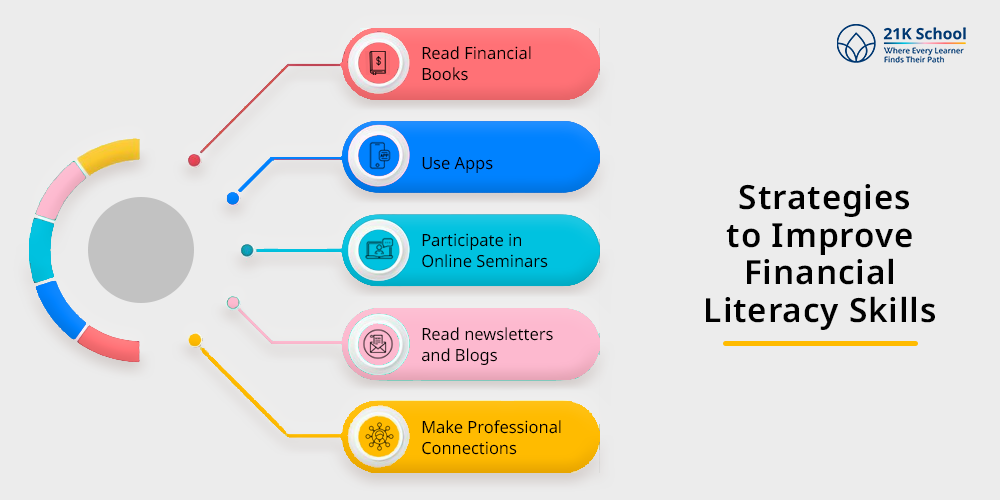
Financial Literacy skills are essential in developing better communication skills. Through financial literacy, students as well as professionals, can achieve their future goals.
But it is important to prepare some strategies that can help you to improve your financial skills.
Here you can check the strategies below.
- Read Financial Books: Numerous books, articles and internet resources are devoted to financial literacy and personal finance. Seek out books on budgeting, saving, investing and debt management that are authored by distinguished financial professionals.
- Use Apps: Various mobile apps and e-learning platforms help in promoting financial skills. Install financial apps to keep tabs on your investments, track your spending and create a budget. By using apps such as JAR, money control, etc. You can manage your money more easily with these apps.
- Participate in Online Seminars: Various seminars were conducted to provide financial aid. Numerous websites provide paid or free courses on investing and personal finance. These courses are made to accommodate students of all skill levels, from novices to experts.
- Read newsletters and Blogs: Subscribe to financial blogs and websites to receive news and insights on economic developments money management investment trends and more. You will be able to make wiser financial decisions if you keep up with the latest developments.
- Make Professional Connections: Making professional connections will help to gain an understanding of financial education. Financial literacy is very much essential in developing positive relationships as well. A professional advisor can answer any questions you may have, help you create a financial plan and offer individualized advice based on your needs.
Financial Literacy Activities
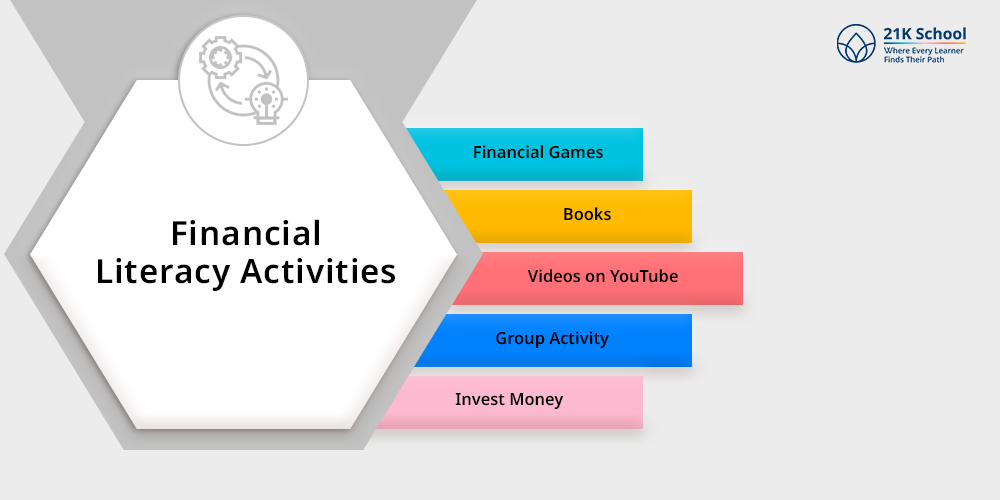
Individuals can promote financial literacy through various activities. These activities help candidates to prepare for their money management skills and develop analytical thinking.
Below, you cab check the financial literacy activities.
1. Financial Games:
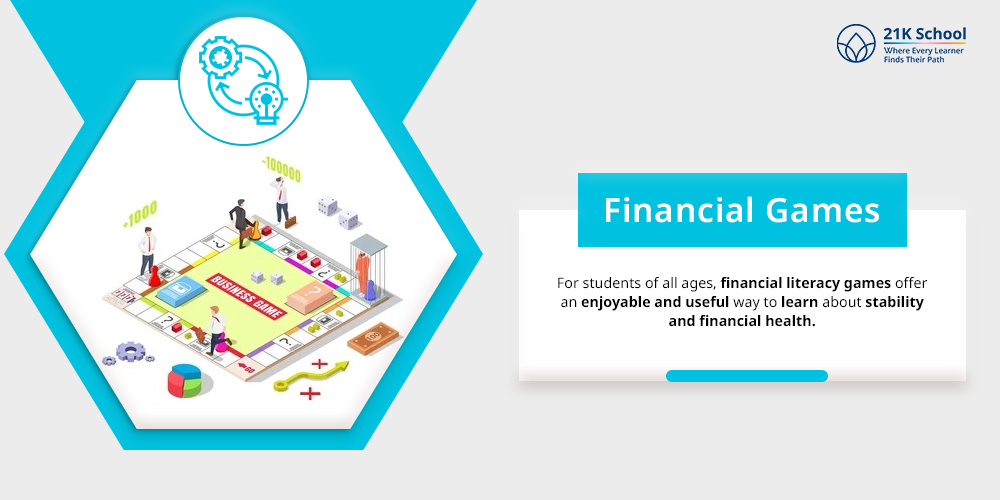
A wide range of financial games was available. For students of all ages, financial literacy games offer an enjoyable and useful way to learn about stability and financial health.
This game also provides a real-life experience for financial decisions.
2. Books:
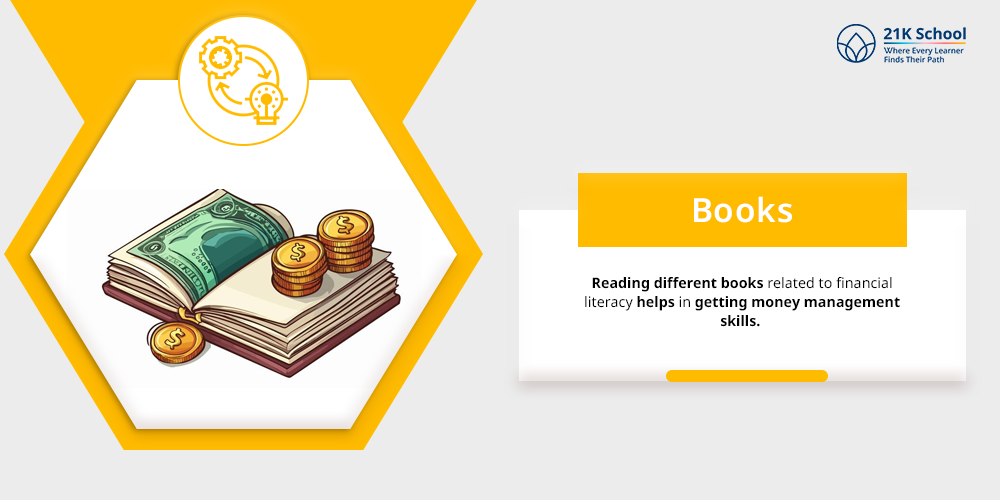
Books are one of the most effective ways of getting financial knowledge. Reading different books related to financial literacy helps in getting money management skills.
3. Videos on YouTube:

Watching YouTube videos is one of the effective activities to do to get financial knowledge. Money control and financial data help in developing an entrepreneurial mindset .
Various YouTubers make content related to money and investment, this helps in getting a proper understanding.
4. Group Activity:
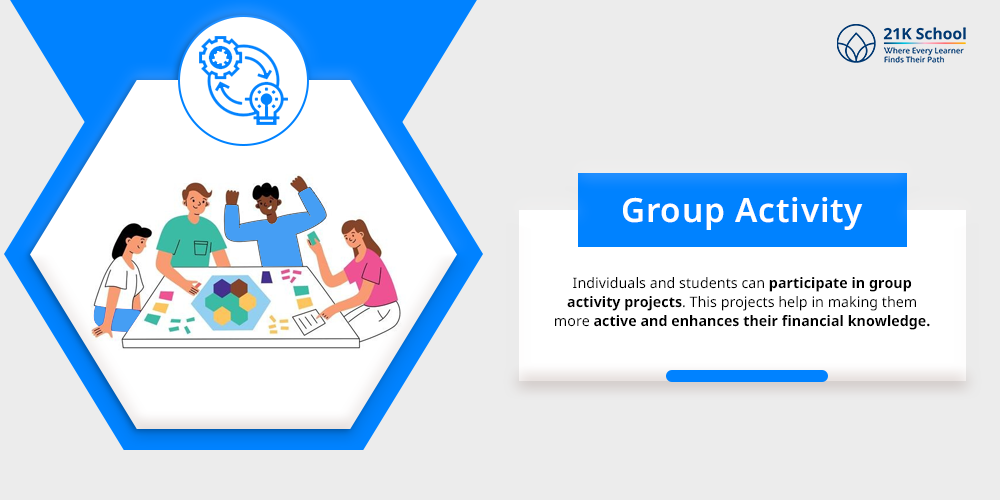
Individuals and students can participate in group activity projects. This projects help in making them more active and enhances their financial knowledge.
Group activities also help in boosting money management skills and are considered one of the effective ways of getting financial knowledge.
5. Invest Money:
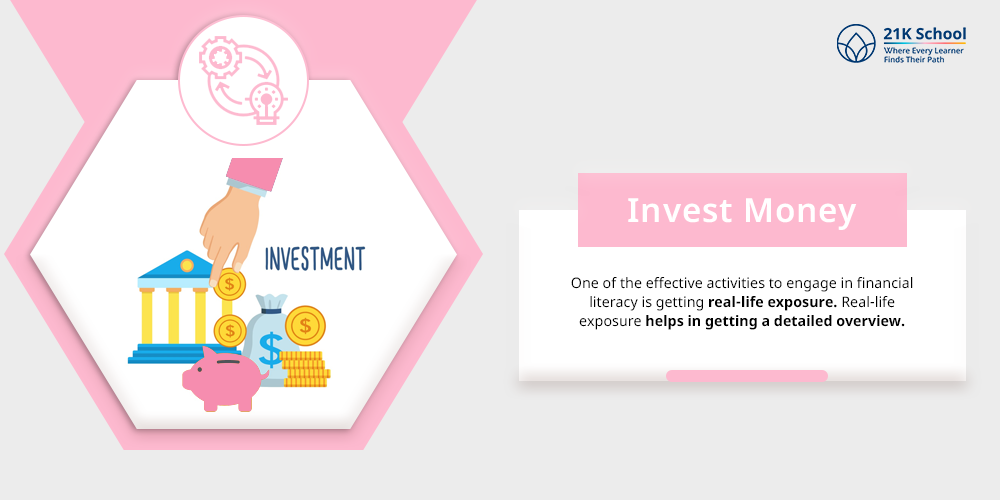
One of the effective activities to engage in financial literacy is getting real-life exposure. Real-life exposure helps in getting a detailed overview.
Anyone can start investing with less money and can achieve a personal experience.
Benefits of Financial Literacy
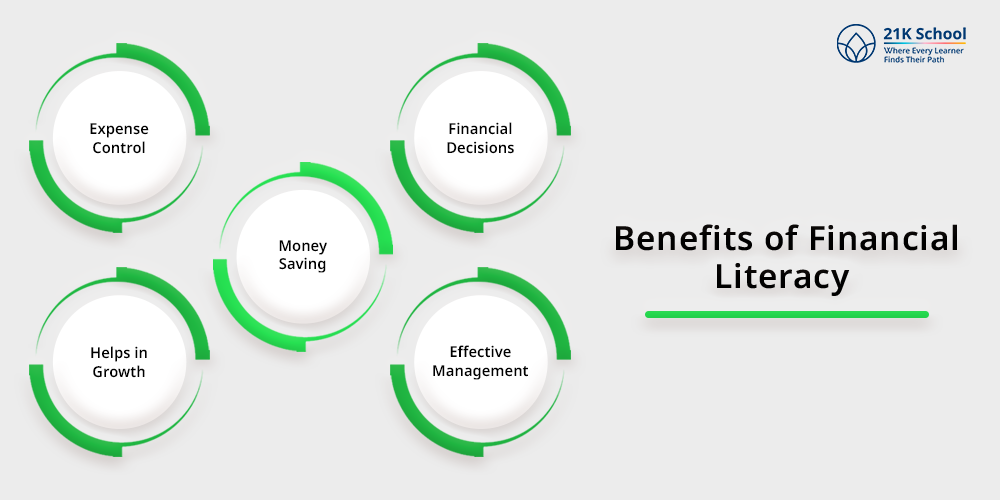
Financial Literacy has lots of benefits in developing money minded.
Teaching students financial literacy in a variety of ways helps them become responsible, financially independent, and confident in their financial judgment.
Here are the benefits of financial literacy.
- Expense Control: Financial Literacy helps in the minimization of expenses. With proper money management skills, candidates can easily control their expenses.
- Financial Decisions: Financial Literacy helps in making proper decisions related to debt, credit, borrowing and money-related concepts. This helps in making smart and consistent decisions.
- Helps in Growth: Through financial literacy, individuals can develop financial growth by utilising proper money management skills. By proper savings, investment and financial descissions individuals will show growth.
- Effective Management: Through Financial education, people can effectively manage their loans, mortgages, borrows, or any financial aid. This helps them to quickly overcome the situation.
- Money Saving: Financial Literacy also provides insights into money savings. Saving is very much essential for future perspective and helps in developing money skills.
How to Become Financially Literate?
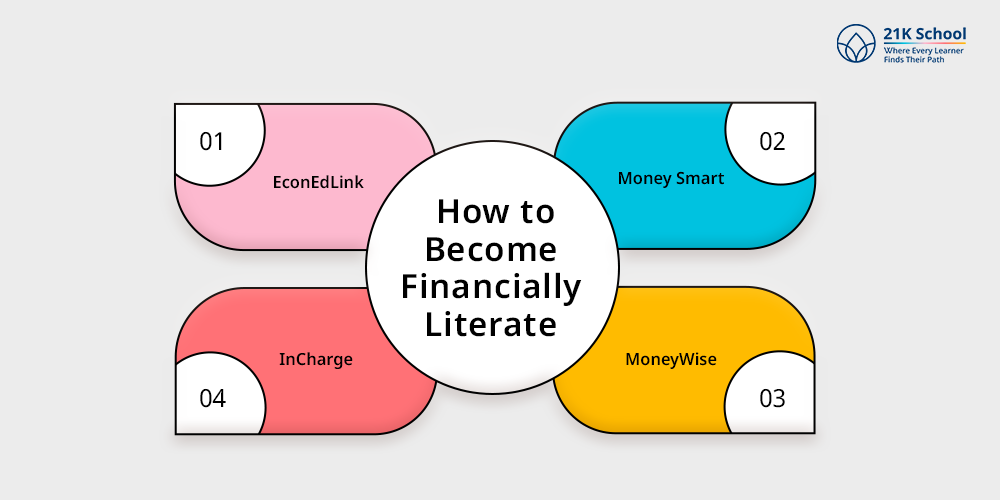
A person’s financial literacy can be raised by a variety of resources and online courses instead of focusing on theoretical knowledge.
One of the effective ways to become financially literate is to indulge in practical exposure.
It is better option to learn financial literacy through online, because money lessons were never taught in schols. Below, you can use tools to enhance your financial literacy.
- EconEdLink: This tool focuses on providing financial literacy to children of grades K 12. This tool uses online strategies to provide the skills and knowledge needed for money education.
- Money Smart: It offers free resources to improve financial literacy, including lesson plans, games and podcasts. One of the effective tools for online education related to financial literacy.
- MoneyWise: A collaboration between Consumer Action and Capital One MoneyWise offers free multilingual financial education. Financial literacy also helps in developing more effective ways to manage money.
- InCharge: It is a company that offers online eBooks for educational purposes and is committed to empowering customers through personal financial management.
Conclusion
It would be unrealistic as even financial literacy is a life skill that empowers individuals to be at their feet in the world of finance be it debt, credit, savings or sometimes the stock market as well.
By learning the principles of earning, budgeting, saving, investing, and credit and debt management, each person can take an educated approach to their finances to allow for more independence and security.
Financial literacy, taught at a young age, gives children the tools to sidestep financial traps and reach their long-term objectives.
Students can acquire a better understanding and improving their skills related to finance through exposure to the field, stimulating activities and making the use of diversified resources.
Educating people about finance not only helps them personally, but also is beneficial for the economic health of the society as a whole.

